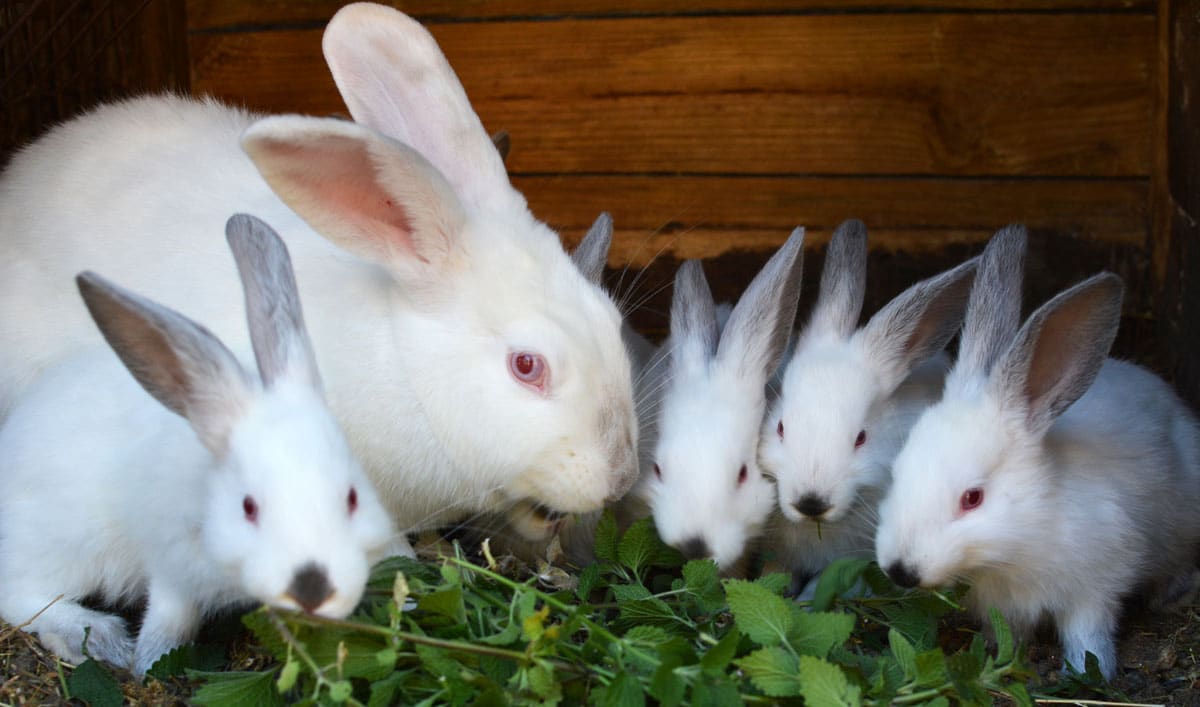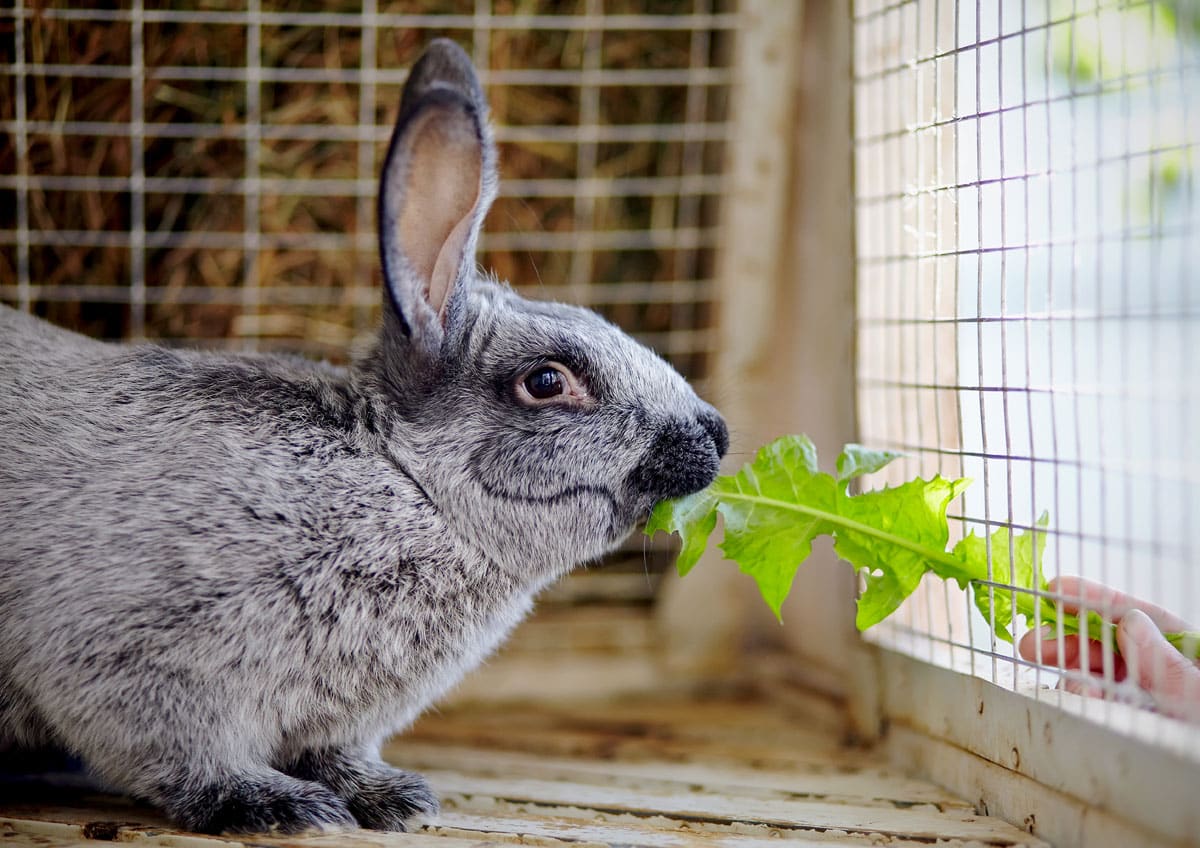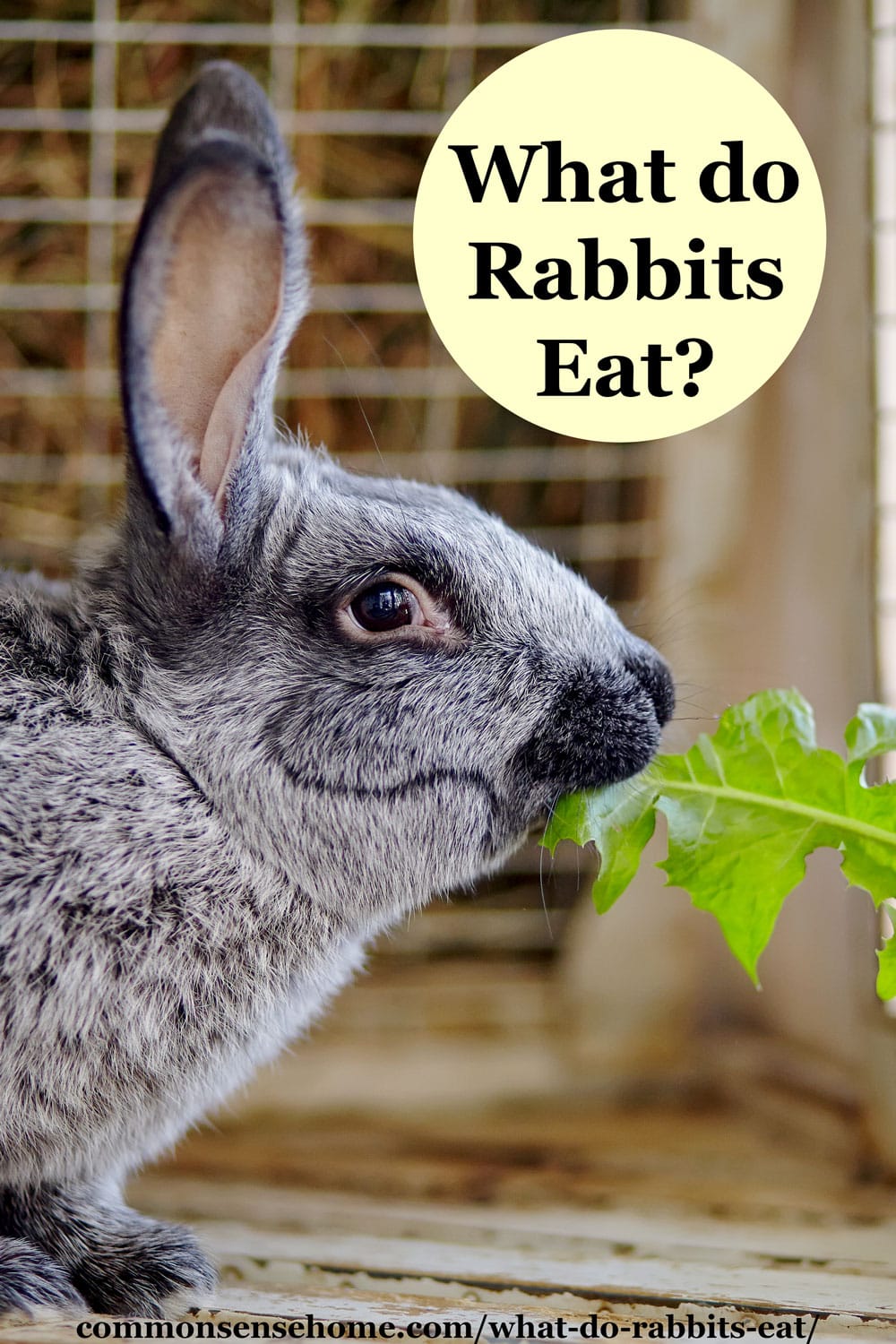What do Rabbits Eat? (Includes Printable List)
This post may contain affiliate links. Read my full disclosure here.
What do rabbits eat? Most people are aware of the rabbit pellets you can buy in the pet and farm-supply stores. This is a balanced diet, and nutritionally sound feed choice, especially for those just starting to raise rabbits.

Rabbits are herbivores and there are a huge variety of plants that they can safely eat fresh or dried. (If you get a “new to you” rabbit, check with their previous owner to see what they’ve been eating.) They eat different types of grass, greens, flowers, herbs – you can grow lots of rabbit safe plants in your yard or garden.
Note: Never feed your rabbit plants treated with chemicals. Fertilizers, herbicides, insecticides, fungicides, and weed killers can be deadly for your furry friends.
Rabbits pellets provide all needed nutrition, but the feed is basically pre-chewed to make the pellets.
Any dried plant (that’s safe) functions as “hay” for feeding rabbits. (I dry grass clippings and comfrey.) Hay is recommended as a “fiber filler” no matter what you feed, because rabbits love to gnaw. Gnawing helps keep their teeth short. (Rabbit’s teeth keep growing through their entire life!)
Dried grass hay is a good choice for rabbits. Alfalfa hay falls in the “treat” category for most adult rabbits, since it is a legume and not a grass. It’s okay to give young rabbits or nursing rabbits a little more alfalfa.
Adding New Foods to Your Rabbit’s Diet
When introducing new food, it’s important to start with small quantities of only one new food at a time. The main part of a rabbit’s diet should always be their pellets or hay.
Gradually increase the amount of new food given over the course of a week or more. This gives the rabbit’s digestive system time to develop the needed bacteria to digest these items properly.
This is how you’d go about introducing baby bunnies to different types of greens for the first time as well. If mama rabbit has access to greens while pregnant and nursing the kits, it is not necessary. Mama passes the needed gut bacteria to the young rabbits through her milk.

If there are signs of lethargy (low energy, sleepy looking bunnies), a sloshy sound in the tummy, or diarrhea, back off feeding that particular food.
Once you’ve gotten your pet rabbits used to eating fresh foods, give a handful of several types each time you feed them. Rabbits, like people, get tired of the same thing all the time, and each rabbit has their particular likes and dislikes.
Free and Readily Available Food Sources
The most readily available plants, that are rabbit safe, are right in your yard. Lawns are basically grass hay that we keep mowed down to look nice. You can feed clippings fresh or dried. Remember, never use chemically treated grass!
And if your lawn is anything like mine, no worries, crabgrass is safe for rabbits too! All parts of the dandelion plant are safe to feed to your bunnies.

It’s fun to watch a rabbit start munching on one end of a leaf and just keep nibbling until it’s gone. Another “weed” often found in the yard that rabbits enjoy is plantain.
Gardens, a Rabbit’s Salad Bar
If you have a garden, your rabbits will enjoy the fruits of your labor as much as you do. Leafy green vegetables such as lettuces, kales, endive, parsley, mustard greens, and spinach are always a bunny favorite.
Rabbits eat all varieties of squash/pumpkin, beets, and carrots. Unlike Bugs Bunny, rabbits will prefer the green tops over the orange fruit. They also enjoy peas, parsley, tomatoes (fruit only), beans (plants only), and turnips.
Brassicas are okay in small amounts, but cabbage, broccoli, cauliflower, brussels sprouts and such can cause gas. This can be an issue because rabbits cannot pass gas. Feed sweet plants like fruits and corn as treats only, as they can cause a rabbit to gain too much weight, causing health and breeding issues.
Would you like to save this?
Herbs
Feeding rabbits herbs does double duty as food and medicine. Safe herbs include basil, cilantro, chamomile, echinacea, fennel, mint, oregano, lavender, lemon balm, rose petals, rosemary, thyme, sage, comfrey and willow bark.
Herbs can aid digestion, help build strong immune systems, reduce inflammation and pain, and prevent issues like urinary tract infection and cancer.
Edible Flowers
Many flowers are not only beautiful, they are also safe for rabbits to eat. Hollyhock, sunflower, carnation, aster, daisy, geranium, marigold, nasturtium, and roses are some examples.
Twigs
Twigs from trees such as apple, birch, hazel, maple, pear, spruce and willow are safe to give your bunnies for gnawing and eating. My rabbits love to chew off and eat the outer layer of bark, no matter how small the diameter of the twigs, from our apple tree prunings in spring.
Check out the printable list of rabbit safe plants for more information on safe twigs and leaves.
Water
Finally, we can’t leave out the most important thing your rabbit needs to consume daily, fresh water. I like to add just a bit of apple cider vinegar to their drinking water. I use 1 Tablespoon per gallon of water.
There are many health benefits to doing this, plus it helps keep down algae growth in the water bottles in summer. Note: Do not use apple cider vinegar if you have galvanized metal water dishes, as it will corrode and be unsafe.
Avoid these Unsafe Plants
All varieties of evergreens are not safe for rabbits, even in small amounts. Bluebells, foxglove, ground ivy, hemlock, milkweed, nightshades (including tomato leaves and eggplant), peach and plum leaves, and rhubarb are all unsafe plants.
Twigs that are unsafe for rabbits include apricot, cherry, beech, elder, oak, oleander, peach, plum, rosewood, and wisteria. Unsafe flowers include acacia, anemone, columbine, crocus, daffodil, dahlia, delphinium, hyacinth, iris, lily of the valley, lupin, poppy, primrose, tulips and all flowering bulbs.
For a printable extensive list of safe and unsafe plants click here.
More Information on Homestead Animals
Animals can add a lot to a homestead, and these articles will help you get started.
Rabbit Breeds, Basic Rabbit Care and Interesting Rabbit Facts
Meat Rabbits – What You Need to Know About Raising Rabbits for Meat
What to Feed Chickens – Do’s and Don’ts for a Healthy Chicken Diet
What do Ducks Eat? (and What They Shouldn’t Eat)

This article was written by Dawn Ruben, owner of Ruben’s Rabbits. Dawn is a homeschooling, homesteading mother of four. She and her family live in northeast Wisconsin, where they raise a variety of small livestock and garden goodies.



Good article. I raised rabbits all naturally for years.